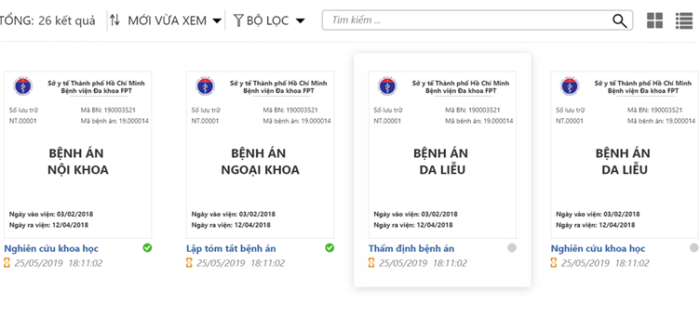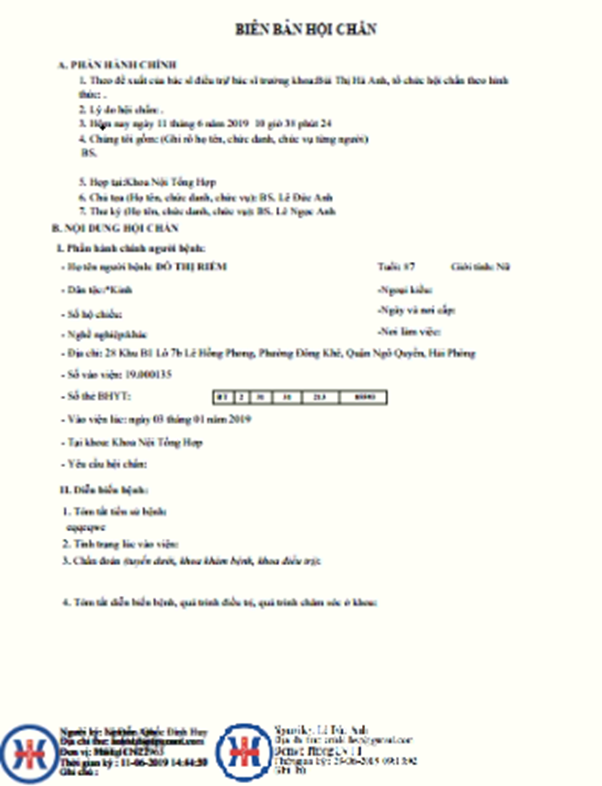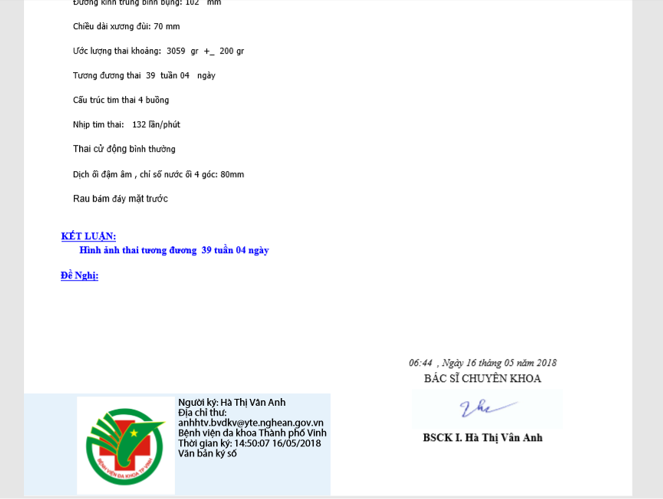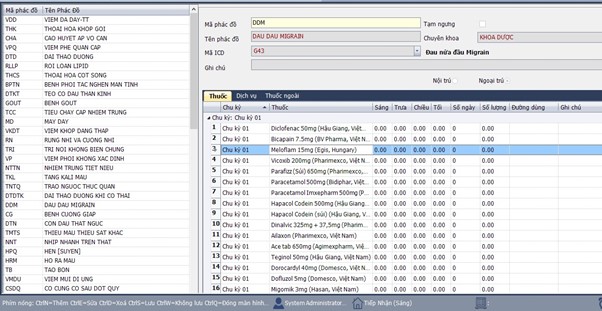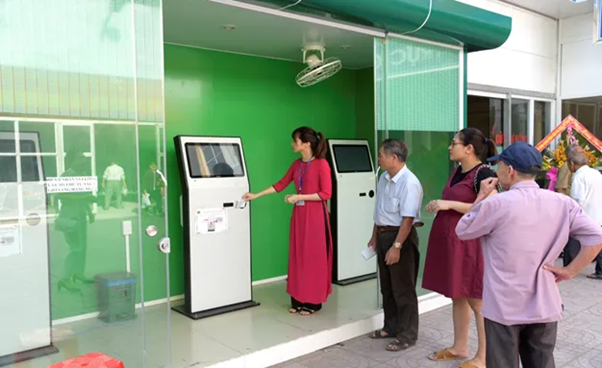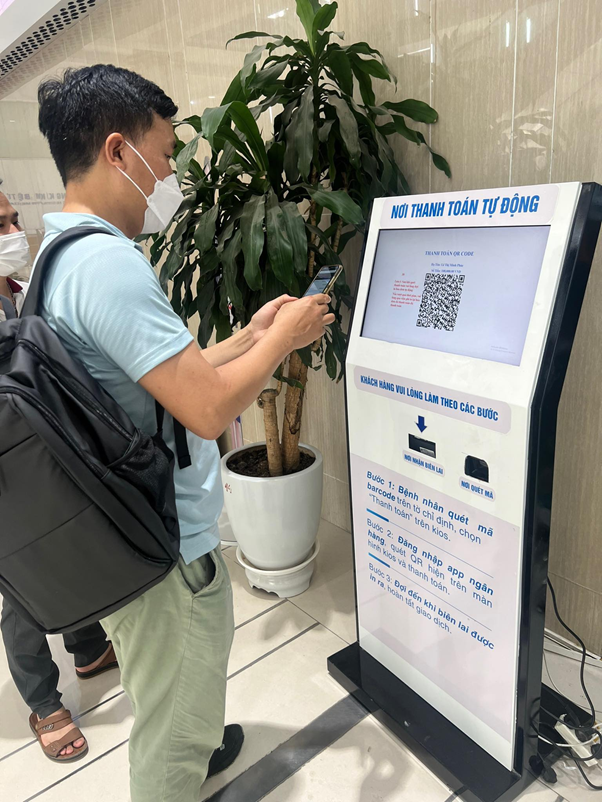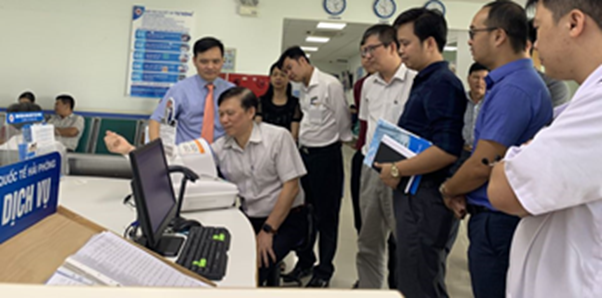Challenges posed by Implementation of Electronic Medical Records at Healthcare Facilities
I. Bases
- The Law on Medical Examination and Treatment No. 40/2009/QH12 was passed by the National Assembly of the Socialist Republic of Vietnam on November 23, 2009, effective from January 1, 2011. This Law was amended and supplemented based on the Law on Planning No. 21/2017/QH14 passed by the National Assembly on November 24, 2017, effective from January 1, 2019.
- The Law on Medical Examination and Treatment No. 15/2023/QH15
- Circular 46/2018/TT-BYT on Electronic Medical Records
- Circular 54/2017/TT-BYT which specifies a set of criteria for information technology applications at medical examination and treatment facilities.
- Decision No. 4069/2001/QD-BYT dated September 28, 2001 of the Vietnamese Minister of Health on the issuance of medical record forms; Decision No. 4604/QD-BYT dated November 29, 2010 of the Vietnamese Minister of Health on the issuance of traditional medicine medical record forms; Decision No. 999/QD-BYT dated April 5, 2011 of the Vietnamese Minister of Health on the issuance of abortion medical record forms; Decision No. 3443 /QD-BYT dated September 22, 2011 of the Vietnamese Minister of Health on the issuance of additional medical record forms and a number of ophthalmology record forms; Decision No. 1456/QD-BYT dated May 4 /2012 of the Vietnamese Minister of Health on the issuance of medical record forms for hand, foot and mouth disease and other relevant regulations.
- Decree 13/2023/ND-CP on personal data protection
II. Context
- After Circular 46/2018/TT-BYT took effect, in March 2019, Hai Phong International Hospital partnered with FPT Information System company and successfully implemented and evaluated advanced electronic medical records, enabling the hospital management system to reach level 7/7 (highest level). This resonated across the country, and was a huge boost for the successful evaluation of electronic medical records of other 5 health care facilities in 2019.
- By the end of 2019, despite considerable confusions and doubts about the implementation’s effectiveness, there were 5 more medical facilities deploying electronic medical records with great success, especially Hai Phong International Hospital, Thu Duc General Hospital and Vinh City General Hospital.
- Following this positive result, the Department of Information Technology under the Ministry of Health of Vietnam, Private Hospital Association, Department of Health of Hai Phong, Quang Ninh, Nghe An, Thai Nguyen… continuously organized conferences to promote the implementation of electronic medical records, followed by workshops on digital transformation.
- The impressive achievements coupled with great determination from central and local agencies were expected to magnify the speed of electronic medical records deployment according to Circular 46/2018/TT-BYT. However…
III. Challenges
- In early 2020, the Covid-19 epidemic broke out across the world and quickly spread to Vietnam, leading to the stagnation of numerous production and social activities. While the Health sector focused on fighting the epidemic, the attention devoted to IT was greatly lessened.
- Hospitals have gradually returned to normal operations after defeating the epidemic, but at no small cost. Operating costs have decreased, patients are hesitant to go to the hospitals. Adequately funded facilities are struggling with equipment bidding plans
- Apart from the objective difficulties mentioned above, there are various obstacles internally posed inside hospitals:
- Despite their strong awareness of the importance of IT application, hospitals have made limited investment in IT
- The implementation of electronic medical records are believed to have a sheer benefit of saving medical record printing costs
- Complaints are voiced by different departments in hospitals about extra efforts on data entry during the deployment of electronic medical records. Some medical staff have the habit of manually inputing data and state that this method is faster and more convenient.
- Administrative or control processes are cumbersome with numerous steps and are difficult to change since the mindset has been imprinted and these workflows are followed on a daily basis.
- Some hospital staff are skeptical about the success, security, and safety of electronic medical records.
- Some companies are incapable of deploying electronic medical records or their solutions are ineffective
- Trade-off between information security and information sharing and reuse
- Consequently, by the end of 2023 (the deadline for level 1 hospitals to deploy electronic medical records), only more than 50 hospitals have proceeded with the implementation, a modest number compared to the total of 1,300 public hospitals and 200 private hospitals in Vietnam.
IV. Answers to the Challenges
To promote the implementation and application of electronic medical records, the following conditions need to be met:
- Direction and determination of state agencies at all levels. Circular 46/2018/TT-BYT needs to be amended to include new deadlines and most importantly a reward/penalty mechanism for early/late implementation.
- Investment from health care facilities including finance, human resources, time, etc.
- Mindset of managers and staff in the health sector needs to be changed regarding:
- Comprehensive application of electronic medical records and utilities reduces not only the cost of record printing but also other costs. It also shortens patient waiting time, boosts productivity in patient service, hence yielding greater revenue for hospitals and higher legitimate income for medical staff
- Extra efforts on data entry are required during initial implementation, and will gradually decrease at the pace of the improvement of staff’s skills. The efforts taken on data input at this stage will also reduce those spent by other departments at the following stages.
- Comprehensive solutions from software suppliers, of which FPT is a typical representative. Electronic medical records are just not enough. Other solutions that maximize the adoption of utilities and new technologies are required to offer the convenience, speed and reliability to health care practitioners and patients as well. (See explanatory figures below)
- Finally, besides software delivery, providers also need to advise hospitals on information security and safety, set out regulations for use, and employ contingency plans to empower hospital leaders’ adoption of electronic medical records and digital transformation.
Figure 1. All medical records are available electronically (some samples)
Figure 2. Comprehensive application of digital and electronic signatures
Figure 3. Returning laboratory results with digital signature online, directly from the laboratory/CLS to clinical rooms, reducing waiting time and procedures.
Figure 4.5: Using applications to support doctors in their daily work: treatment regimens, drug interactions
(Image 4)
(Image 5)
Figure 6,7,8: Electronic medical records free doctors/nurses from holding paper records during medical treatment at inpatient departments, and allow them to prescribe medical orders on tablets with the Doctor app. Nurses can follow doctor’s orders using tablets. Patient can sign electronic confirmations after nurses complete the procedure.
(Image 6)
(Image 7)
(Image 8)
Figure 9. Cashless payment applications cut down steps that require queuing at cashier counters, shortening patient waiting time and increasing their satisfaction and lowers hospitals’ costs for bill collection, reducing examination time per case, and boosting patient service productivity.
- Patients are able to join the system, be proactive in their choices, get more information, and be more satisfied.
Figure 10. Patients can make appointments on their own via webs and view examination results, prescriptions, etc.
Figure 11. Patients’ self-reception on arrival at hospitals
Figure 12. Patients make self-payment via QR code without the need for cashiers
Figure 13. Mobile App for patients
Figure 14. The patient signs electronically
- In addition, various convenient applications for patients are offered such as notifications via SMS, Zalo, patient reviews of hospitals, electronic invoices, etc. Integrated devices provide maximum support for doctors, increasing accuracy and speed.
Figure 15. Integrating vital sign monitors into the software
Figure 16. Applying AI in diagnosis. “Speech to text” and other applications assist hospital leaders in the facility operations.
Exclusive article by FPT IS Technology Expert
Ngo Cong Canh
Senior Expert
FPT Information System Company.



